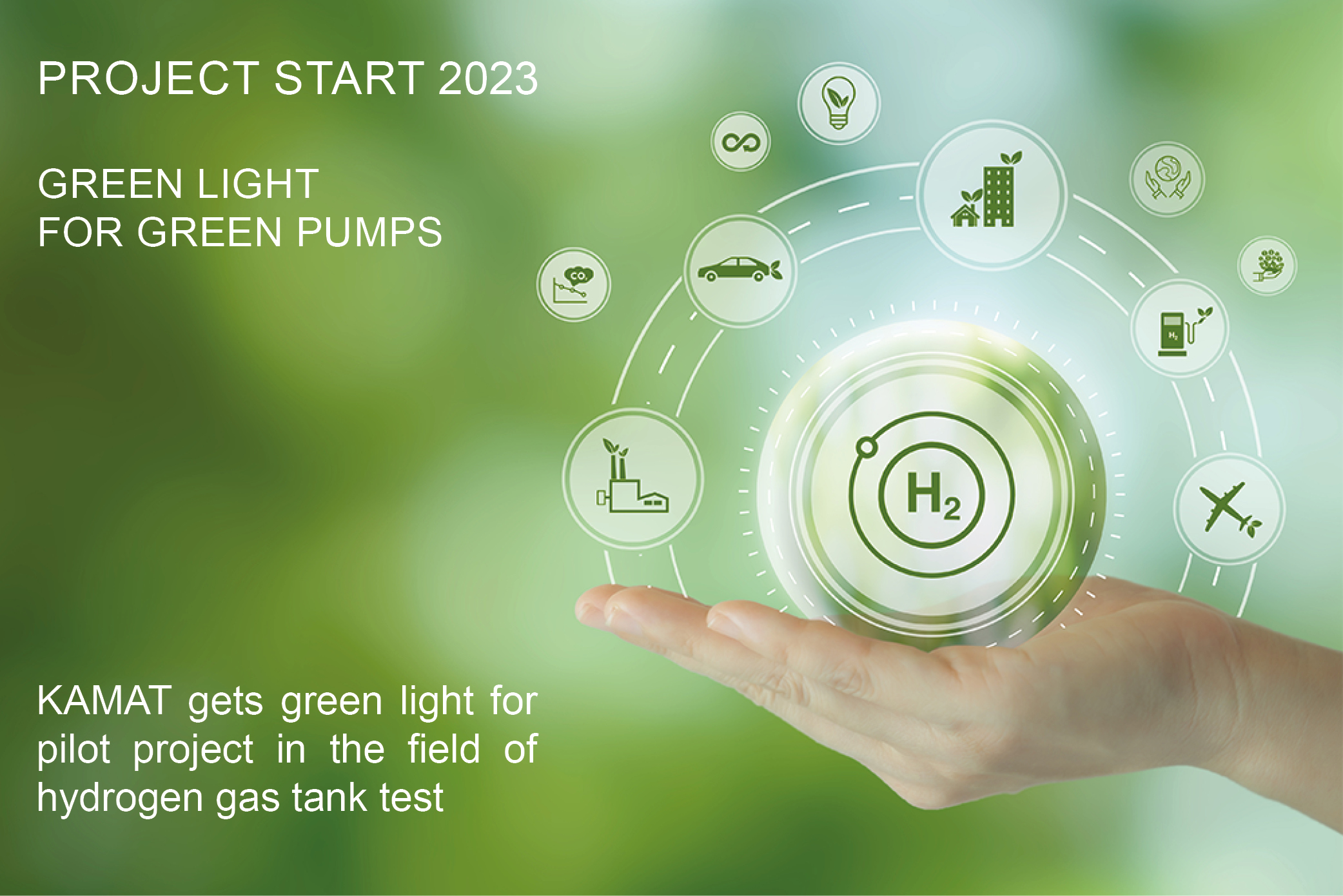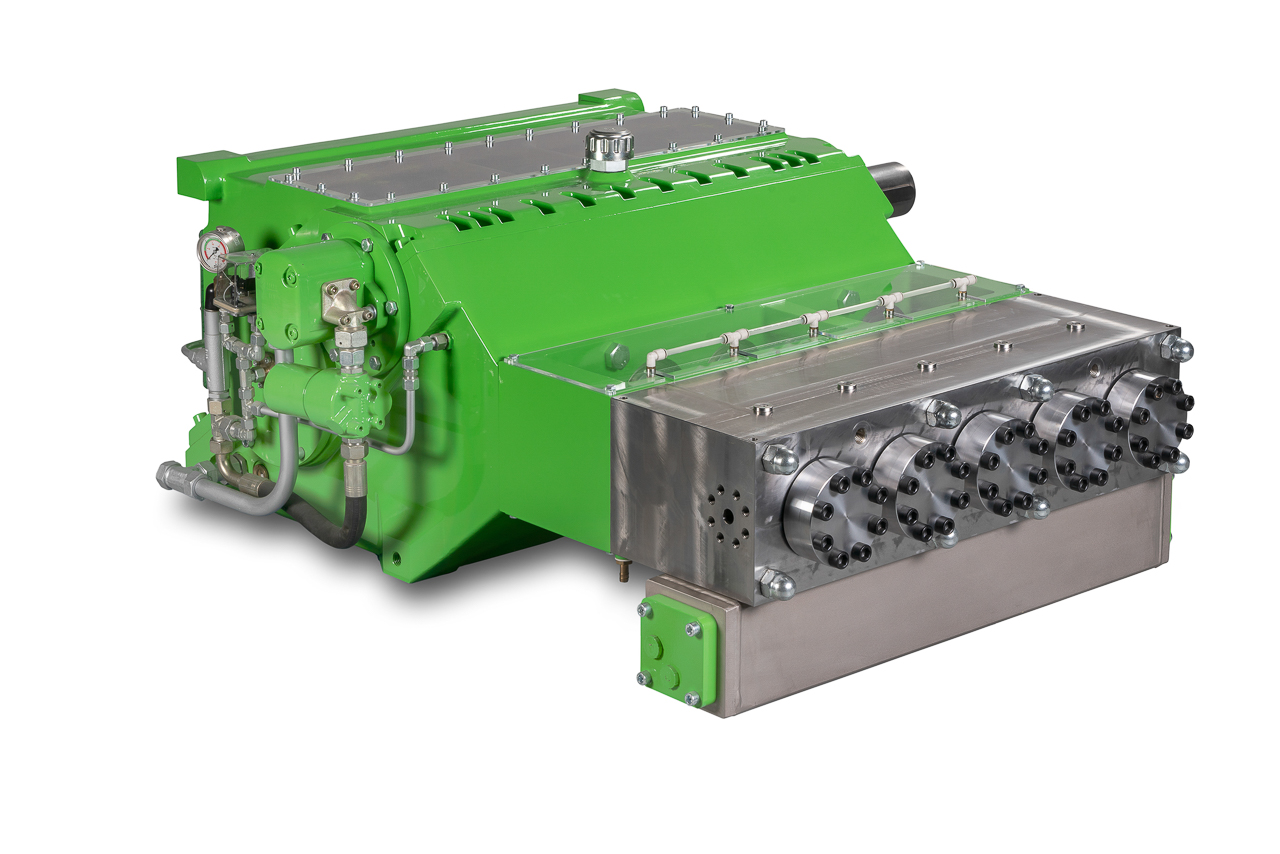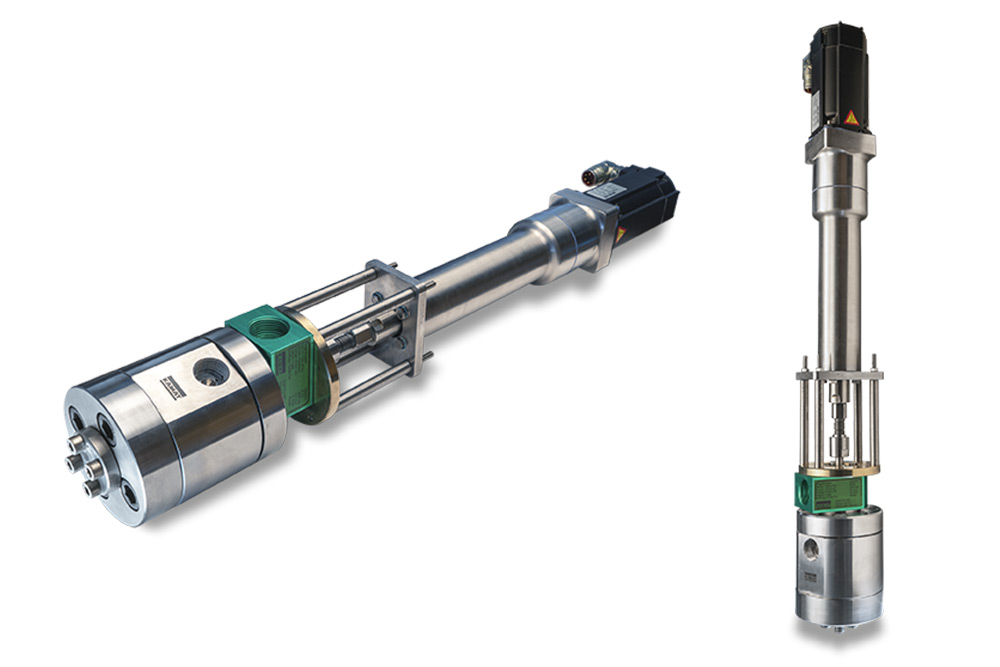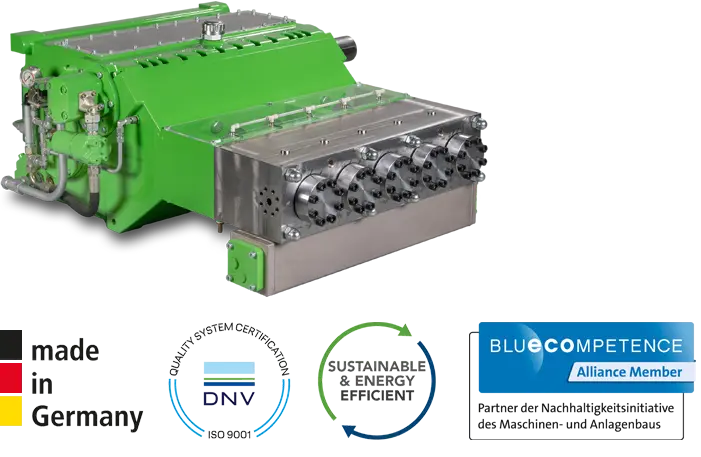The year 2023 starts with an unusual and green order at KAMAT which we received at the end of 2022: Within a project of the federal ministry for digital affairs and transport, trying to decrease pollution caused by traffic, KAMAT is delivering two high-pressure pump units to be used in pressure testing systems for hydraulic pressure tests on H2 gas tanks.
Pilot project for H2 gas tank testing units: challenges and requirements faced by KAMAT
Last year the company Industrieanlagenbetriebsgesellschaft mbH with headquarters in Ottobrunn (IABG) reached out to us with a contract within the pilot project commissioned by the ministry for the pressure testing of hydrogen-tanks. The IABG is building a hydraulic testing unit for hydrogen tanks that are to be used in various vehicles. This includes the technology for the filling of such tanks. IABG asked us to check whether KAMAT´s high-pressure units could meet the requirements needed for the project. Sales director Fabian Hoff didn’t hesitate for long. He was confident that KAMAT could meet the requirements. Straightaway he started talks with the head of the project. He requested more information to create the best possible technical solution for the application.
The task: Impinging tanks with a minimum volume of 600 l with cyclic pressure using water as media. According to the IABG, there are only very limited test options for tanks of this size class, which is why IABG cannot fall back on existing systems and they therefore weren’t sure for the feasibility of the project. “The customer, before starting talks with us, had talked to other companies about possible solutions. But all of them were limited by volume due to the use of pressure transducers. The tanks that are to be tested in this project needed a lot more volume than others were able to work with, that is where we came in to play with our high-pressure plunger pumps. Because our high-pressure pumps are basically also suitable for volumes well over 600 l”, says a delighted Fabian Hoff.
HP units including regulating choke, valves and controls for the pressure testing unit for hydraulic testing at H2 gas tanks by one provider
At any rate, a key function our units have to fulfil is both to run 1-10 full cycles per minute and to be able to release that pressure after ramping it up. Accordingly, that means that our pumps have to be operated in intervals or with swelling loads. Another unique challenge when strength testing for pump systems (including valves, regulating chokes, sensors and controls) is to precisely hit and control the desired pressure.
Due to the design of the KAMAT pump, upper pressures of up to 1350 bar can be achieved in this setup. This raises the question of how exactly the pumps can be pressure-controlled. A suitable solution was designed with the engineering department, including the necessary valve, control and automation technology. All of the parts needed are designed and manufactured in-house at KAMAT – All from one provider.
About the pilot project using high-pressure pumps for pressure testing units of H2 gas tanks
KAMAT´s client is a member of a consortium of companies. The companies specialize in hydrogen tanks, filling of tanks, testing and commercial vehicles. This consortium is supported by the Ministry of Digital Affairs and Traffic with 25 mio. Euro for a period of three years that started 2020. The consortium’s aim is to provide a market ready solution for hydrogen driven vehicles, applications and filling technology by 2025.
IABG, a leading testing expert, is taking on the part of tanks and filling of the tanks. IABG is now developing a testing mechanism to ensure safety when using CRYOGAS tanks and the filling of them. The task of developing emission free transport and traffic will lead to steep increase in their high-pressure filling and testing capacity at IABGs headquarters in Dresden and Lichtenau (Paderborn). Exactly that is where KAMAT comes into play as a supplier for knowledge in high-pressure technology and pumping units. To a good cooperation!
KAMAT’s scope of delivery for use in the field of hydraulic leak testing, pressure testing, burst testing:
- Unit (drive 630 kW) including the necessary valve technology, control throttle and control technology for cycling tests on hydrogen tanks – K55032A2-5G-E630B
- Unit including the necessary valve technology and control technology for bursting hydrogen tanks (small mobile unit with high efficiency) – K108A-3-E15B
- Cycling test with max. upper pressure peak value of 1500 bar, unit design 1500 bar
- Burst test with a maximum achievable static pressure of 2200 bar
- KAMAT_Newsarticle_pic_H2_Project_150dpi
- 13_K_50018_A_3G_1-Kopie_web
Suitable for the unit for the pilot project in the field of H2 gas tank testing: KAMAT high-pressure pump of type K50018A-3G
- KAMAT_Regeldrossel_fuer_Druckbehaelterpruefung
KAMAT control throttle 3000 bar for use in the area of pressure vessel testing



